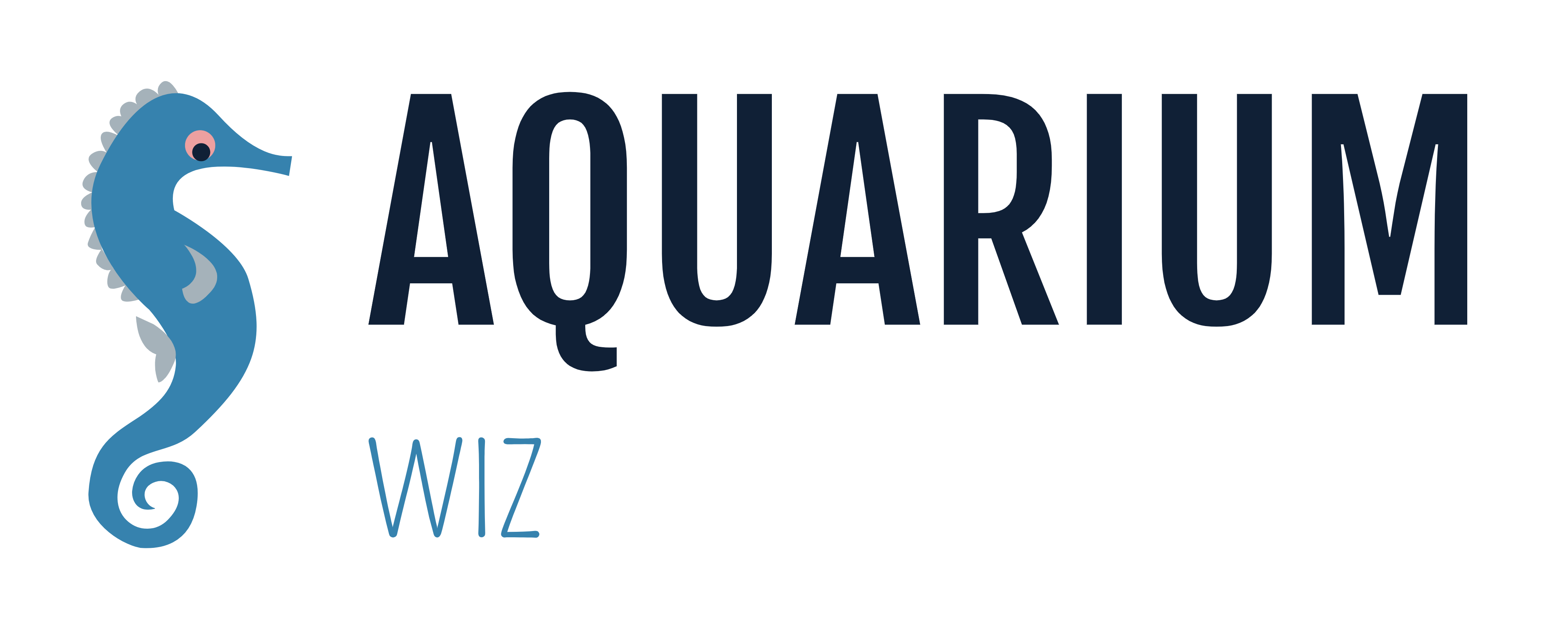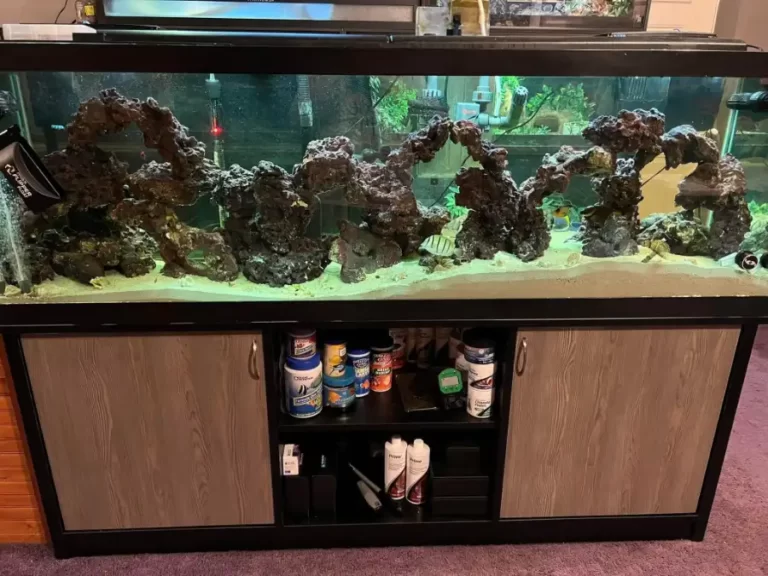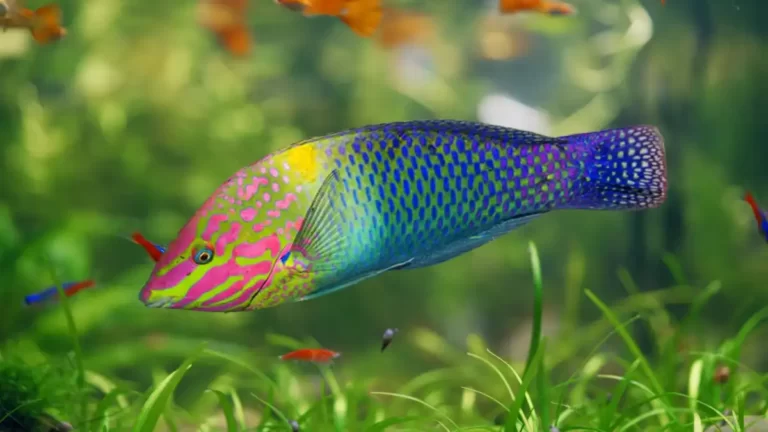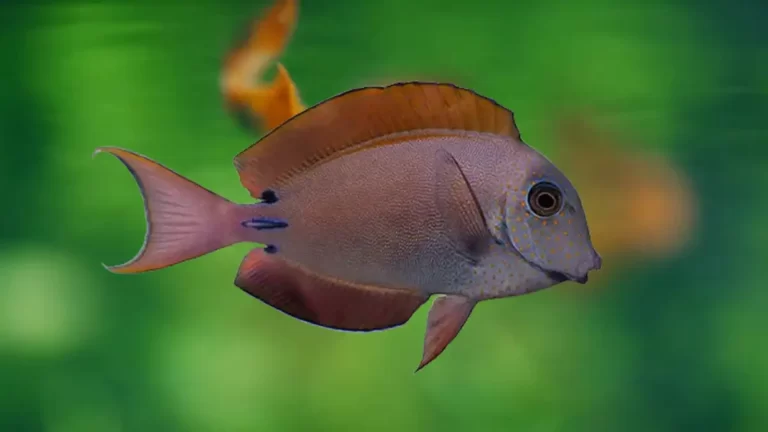Chicago Sunburst Anemone Care: Everything you Need to Know
The mesmerizing beauty of the Chicago Sunburst Anemone has captivated aquarium enthusiasts around the world. With its vibrant colors and graceful tentacles, this aquatic marvel adds an enchanting touch to marine aquariums.
In this comprehensive guide, we delve into the intricate world of Chicago Sunburst Anemone care, equipping you with the knowledge and insights needed to provide the best environment for these stunning creatures.
From setting up the perfect tank to understanding their unique behaviors, join us on a journey to unlock the secrets of successful Chicago Sunburst Anemone care. Whether you’re a seasoned hobbyist or a curious beginner, this article is your gateway to a thriving underwater ecosystem.
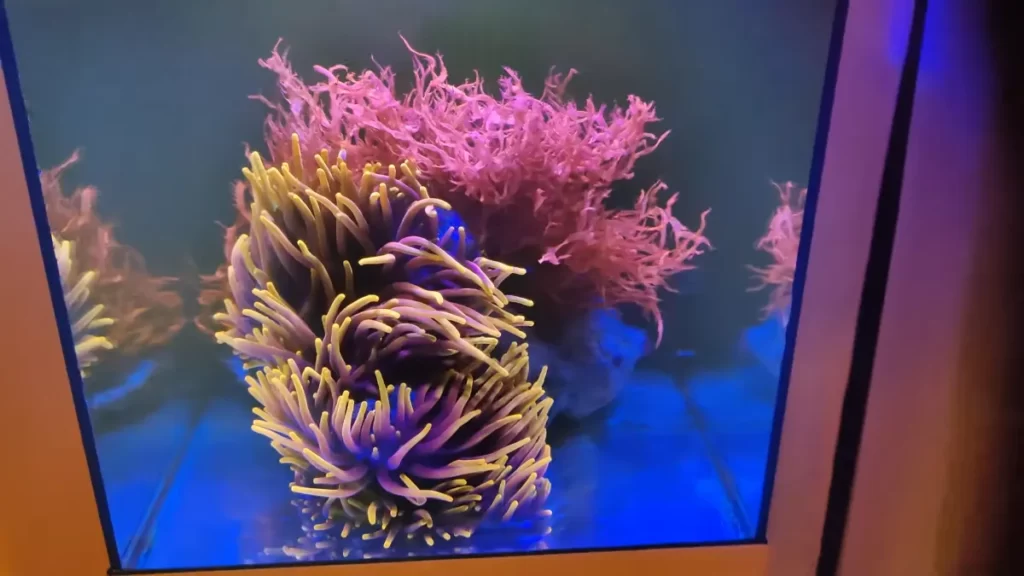
Origin of Chicago Sunburst Anemone
The Chicago Sunburst Anemone is a strain of the Bubble Tip Anemone (Entacmaea quadricolor) that is native to the Indo-Pacific region, including the Red Sea, the Great Barrier Reef, and the waters around Japan and Indonesia.
It is believed that the Chicago Sunburst Anemone was first discovered in the United States in the early 2000s. The precise origin of the anemone is unclear, but it is thought to have been imported from Indonesia or Australia.
Compared to the Colorado Sunburst, which is another popular strain of the Bubble Tip Anemone, the Chicago Sunburst is more of a golden yellow to very light orange color. It is known for its striking coloration, which makes it a highly sought-after species in the aquarium trade.
The Chicago Sunburst Anemone is a relatively hardy species that can adapt to a range of water conditions. However, it requires strong lighting and good water flow to thrive. It is also important to note that the anemone can be aggressive towards other sessile invertebrates, so it should be kept in a tank with plenty of space and minimal competition for resources.
Physical Characteristics of Chicago Sunburst Anemone
Size and Shape
The Chicago Sunburst Anemone, also known as Entacmaea quadricolor, is a medium-sized rock-dwelling anemone that can grow up to 12 inches (30 cm) wide. It has a cylindrical body with a sticky base that allows it to attach to rocks or other surfaces. The column, or the body, of the anemone is pale green to white in color and is twice as long as its width when extended. The tentacles, which are used for feeding and protection, are long and slender and arranged in a circular pattern around the mouth of the anemone.
Color and Texture
The Chicago Sunburst Anemone is one of the most recognizable strains of bubble tip anemones due to its unique coloration. Compared to the intense mostly orange Colorado version, the Chicago Sunburst is more of a golden yellow to very light orange. The tentacles of the anemone are typically tipped with a bright green color, which contrasts with the yellow or orange base. Under LED lighting, the anemone appears yellow, while under halides, it appears red.
The texture of the anemone is smooth and slimy to the touch. The sticky base allows it to attach firmly to rocks or other surfaces, while the tentacles are covered in small stinging cells called nematocysts. These cells are used for capturing prey and protecting the anemone from predators.

Habitat and Distribution
The Chicago Sunburst Anemone (Entacmaea quadricolor) is a marine invertebrate that is found in the shallow waters of the Indo-Pacific region. They are commonly found in the waters surrounding Japan, Indonesia, and the Great Barrier Reef. They are also found in the waters of the Gulf of Mexico, the Caribbean Sea, and the eastern coast of the United States.
This species of anemone prefers to live in areas with moderate to high water flow and can be found in a variety of habitats such as rocky shores, tidepools, and coral reefs. They can also be found in areas with man-made structures such as seawalls and pilings.
The Chicago Sunburst Anemone is a benthic species that is found at depths ranging from the low tide line to at least 15 meters deep. They are often found living in association with other marine organisms such as clownfish, crabs, and shrimp.
In terms of water quality, these anemones prefer water that is well-oxygenated and has a pH between 8.1 and 8.4. They are sensitive to changes in water temperature and quality and are known to be indicators of environmental stressors such as pollution and climate change.
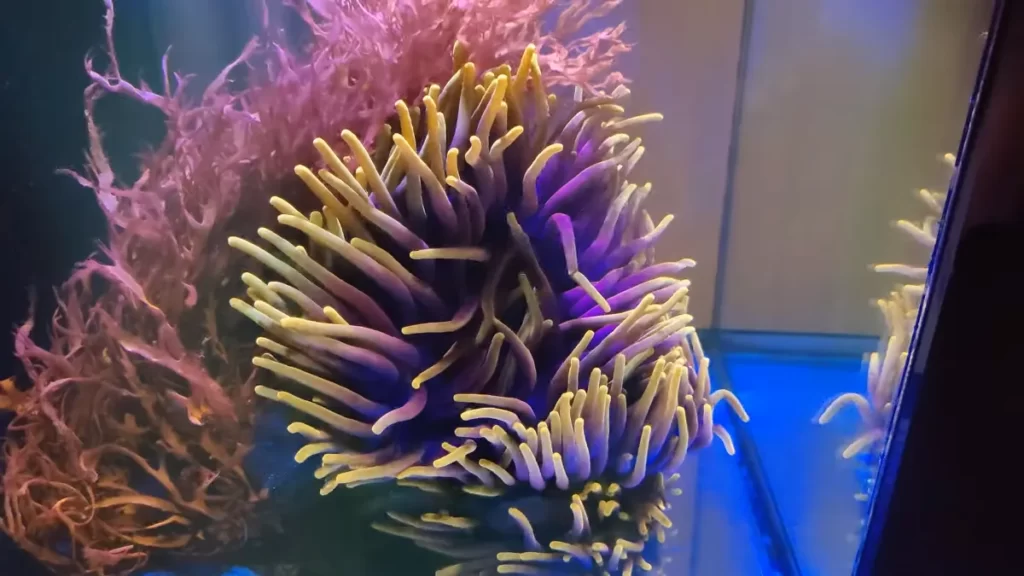
Life Cycle of Chicago Sunburst Anemone
Chicago Sunburst Anemones have a life cycle that is similar to other Bubble Tip Anemones. They are hermaphrodites, which means they have both male and female reproductive organs. However, they usually do not self-fertilize and require a partner to reproduce.
Reproduction
When a Chicago Sunburst Anemone is ready to reproduce, it will release eggs and sperm into the water column. The eggs and sperm will then combine to form larvae. The larvae will float around in the water column for several weeks before settling on a suitable substrate.
Larval Stage
During the larval stage, the Chicago Sunburst Anemone will go through several developmental stages. It will start as a small, free-swimming larva and gradually develop into a juvenile anemone. The juvenile anemone will then settle on a suitable substrate and start to grow.
Growth and Development
Once the Chicago Sunburst Anemone has settled on a substrate, it will start to grow and develop. It will continue to grow until it reaches its maximum size, which can be up to 12 inches in diameter. During this time, the anemone will also develop its characteristic coloration, which can range from yellow to orange to red.
Lifespan
The lifespan of a Chicago Sunburst Anemone can vary depending on the conditions in which it is kept. In the wild, they can live for several decades, but in captivity, they typically have a shorter lifespan. Proper care, including regular feeding and water changes, can help to extend the lifespan of a Chicago Sunburst Anemone.
Overall, the life cycle of a Chicago Sunburst Anemone is fascinating and complex. By understanding their life cycle, aquarists can provide the proper care and environment needed to keep these beautiful creatures healthy and thriving in their aquariums.
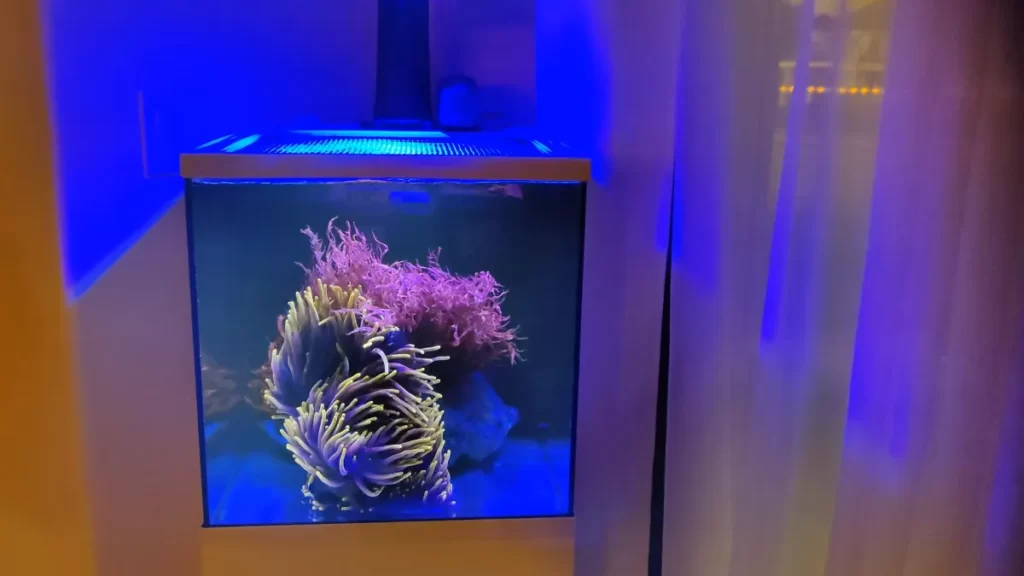
Diet and Predators
Chicago Sunburst Anemones are predatory and feed on small fish, shrimp, and plankton. They have stinging tentacles that they use to capture their prey. These tentacles contain nematocysts, which are stinging cells that release venom upon contact with prey. Once the prey is captured, the anemone uses its tentacles to bring it to its mouth, which is located in the center of its body.
In addition to being predators, Chicago Sunburst Anemones are also preyed upon by various marine animals, including certain species of fish, crabs, and sea stars. To protect themselves from these predators, the anemones have evolved various defense mechanisms. For example, they can retract their tentacles and close their mouths to prevent predators from entering. They can also detach their tentacles if they are attacked, allowing them to escape and regenerate new tentacles later.
It is important to note that Chicago Sunburst Anemones should not be kept with aggressive fish or invertebrates that may harm them. They are best kept in a species-only tank or with peaceful tank mates.
Related Post: Banana Torch Coral: Care Guide and Maintenance Tips
Role in Ecosystem
The Chicago Sunburst Anemone plays an important role in its ecosystem as a predator and as a habitat for other organisms.
As a predator, the anemone uses its tentacles to capture small fish and invertebrates. It then immobilizes its prey with stinging cells called nematocysts and consumes it through its mouth, which is located in the center of its oral disk. This feeding behavior helps to control the population of small organisms in the ecosystem and contributes to the overall balance of the food chain.
In addition to its role as a predator, the Chicago Sunburst Anemone also provides habitat for other organisms. Its column and oral disk provide a substrate for other animals, such as crabs and shrimp, to attach to and live on. The anemone also serves as a refuge for small fish and other invertebrates that are seeking protection from predators.
Conservation Status
The Chicago Sunburst Anemone is not currently listed as an endangered species. However, like all marine life, it is vulnerable to habitat destruction, pollution, and over-collection.
The primary threat to the Chicago Sunburst Anemone is the aquarium trade. Due to their striking appearance, they are highly sought after by aquarium enthusiasts. Over-collection can lead to a decline in population, which can have a negative impact on the ecosystem.
In addition to the aquarium trade, the Chicago Sunburst Anemone is also vulnerable to habitat destruction. Coastal development, pollution, and climate change can all have a negative impact on the anemone’s habitat.
Efforts are being made to protect the Chicago Sunburst Anemone and its habitat. For example, the establishment of marine protected areas can help to conserve the species. These areas restrict fishing and other activities that can harm marine life.
Related Post: Tiger Torch Coral: Care Guide and Maintenance Tips
Cultural Significance
The Chicago Sunburst Anemone is highly valued in the aquarium trade due to its striking appearance and unique coloration. Its vibrant red, green, and yellow pigments make it a sought-after addition to any reef tank.
In addition to its popularity among hobbyists, the Chicago Sunburst Anemone also holds cultural significance in certain Asian countries. In Japan, for example, anemones are seen as symbols of good luck and prosperity. They are often featured in artwork and are sometimes given as gifts to wish someone success in their endeavors.
The Chicago Sunburst Anemone’s popularity has also led to its inclusion in various educational and research initiatives. For example, some universities use them as research subjects to study symbiotic relationships between anemones and their host organisms.
Despite its cultural significance, it is important to note that the Chicago Sunburst Anemone should never be taken from the wild. It is always best to purchase captive-bred specimens from reputable sources to support sustainable and responsible aquaculture practices.
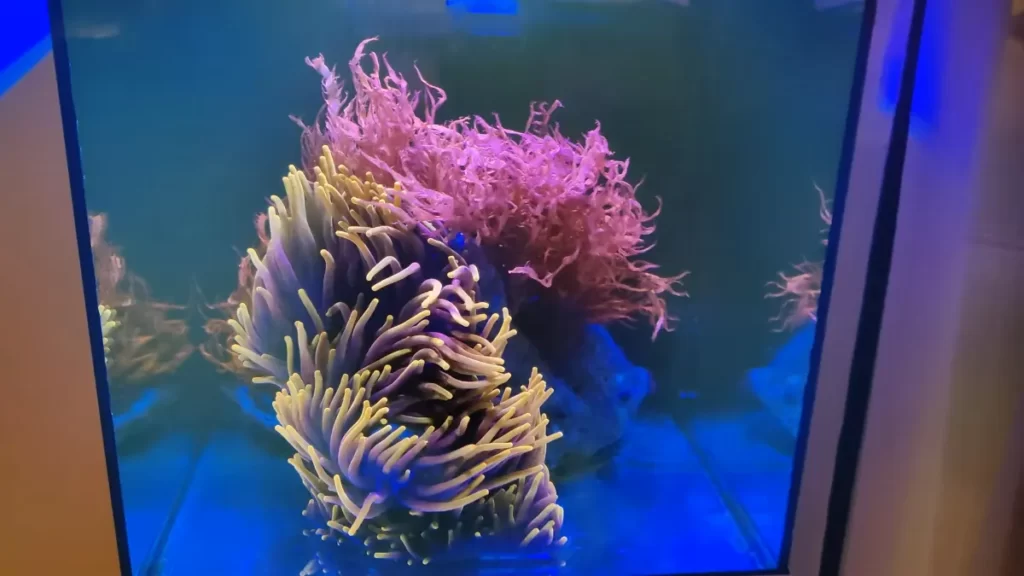
Frequently Asked Questions [FAQs]
What should I do if my anemone’s tentacles are deflate?
Deflated tentacles can indicate stress. Check water quality, lighting, and ensure proper feeding. Seek advice if the issue persists.
Can I keep multiple Chicago Sunburst Anemones in the same tank?
It’s generally not recommended, as they can exhibit territorial behavior and compete for space. Each anemone needs ample room to thrive.
Do Chicago Sunburst Anemones require direct feeding?
While they have a symbiotic relationship with clownfish, supplementing their diet with appropriate foods like brine shrimp or mysis can enhance their health.
Are these anemones prone to certain diseases?
Yes, they can be vulnerable to infections, bleaching, and parasites. Regular observation, proper tank hygiene, and a stress-free environment help prevent these issues.
